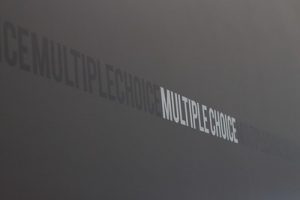I’ve written extensively about the Washtenaw Community College administration’s inability to control its spending. For example, last month I showed that the institution’s administrative costs rose by 17.5% between 2012 and 2019 using inflation-adjusted dollars.
Inflation adjustment is important. During the period between 2012 and 2019, WCC’s budget for instruction rose 17.9% from $42.5M to $50.1M.
That is, until you adjust for inflation.
| Fiscal Year | Instructional Expense | 2019 dollars |
|---|---|---|
| 2012 | $42,331,000 | $47,136,320.93 |
| 2013 | $42,508,000 | $46,650,101.76 |
| 2014 | $45,344,209 | $46,968,321.00 |
| 2015 | $45,683,296 | $49,276,019.89 |
| 2016 | $46,714,309 | $49,760,382.39 |
| 2017 | $48,712,798 | $50,806,820.33 |
| 2018 | $47,754,956 | $48,620,264.61 |
| 2019 | $50,175,704 | $50,175,704.00 |
Comparing instructional budgets for 2019 and 2012 using 2019-adjusted dollars, WCC’s instructional budget rose by just 6%. During that entire 9-year period, WCC’s instructional spending remained in a tightly controlled range between $46.6M and $50.8M – when adjusted for inflation.
The Administration clearly can control spending in certain areas – like instruction and maintenance. But it chooses to apply those savings to expansion of the administration.
Instructional spending should be a priority
The cost of institutional administration should not rise by 17.5% while instructional spending rises by 6% and the maintenance budget bottoms out. WCC’s enrollment has been relatively steady to slightly positive during this period.
The size of WCC’s instructional staff has not changed, so obviously the increase in enrollment was manageable. If enrollment growth does not justify increasing the instructional staff, then it surely does not justify increasing the administration. Yet, between 2012 and 2019, the WCC administration grew by 57 full-time positions.
More disturbing than the administration’s self-preservation is the WCC Trustees’ unquestioning acceptance of this strategy. The Trustees approve every single new hire by the administration, and every limit on the instructional budget.
The administrative growth has not improved WCC’s graduation rate, made the institution more efficient, decreased WCC’s student loan default rate, or improved the campus facilities. Rather, it has only made WCC more expensive to operate.
Instructional spending is critical. During a recession, WCC’s instructional spending naturally rises. Overloading WCC with permanent administrative positions decreases its budgetary flexibility by diverting available funds from instruction to administration.
Whenever the enrollment rises, WCC needs more instructors, more instructional supplies, and more classroom materials. If the current economic downturn ultimately compares to the Great Recession, WCC may need to increase its instructional budget by as much as $10M.
It would be a shame to discover that the WCC Trustees mindlessly traded institutional flexibility and responsiveness for additional administration.
—
WCCWatch: Martin Thomas | WCCWatch: David DeVarti | WCCWatch: Christina Fleming | WCCWatch: Ruth Hatcher
Photo Credit: Tom Britt, via Flickr































